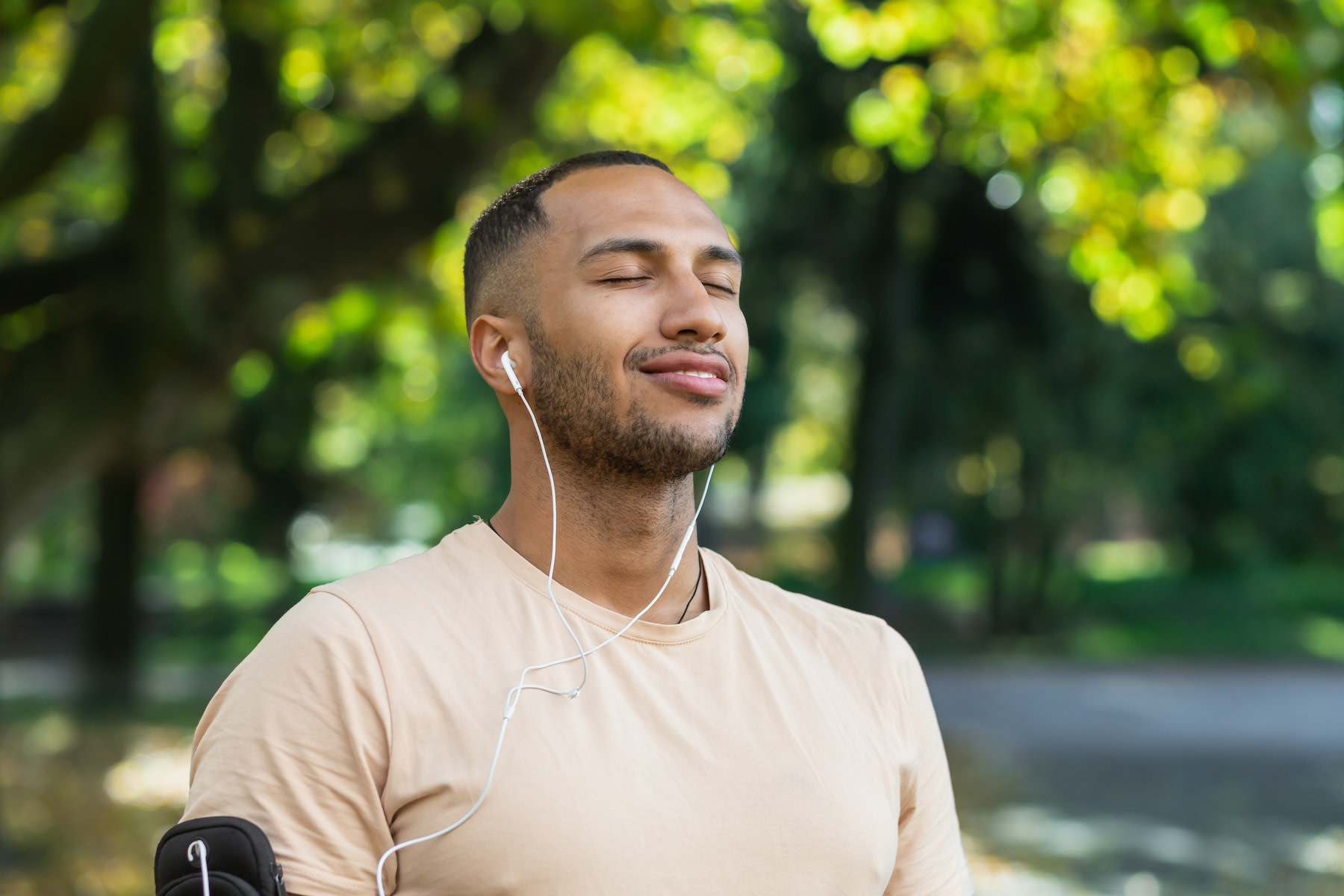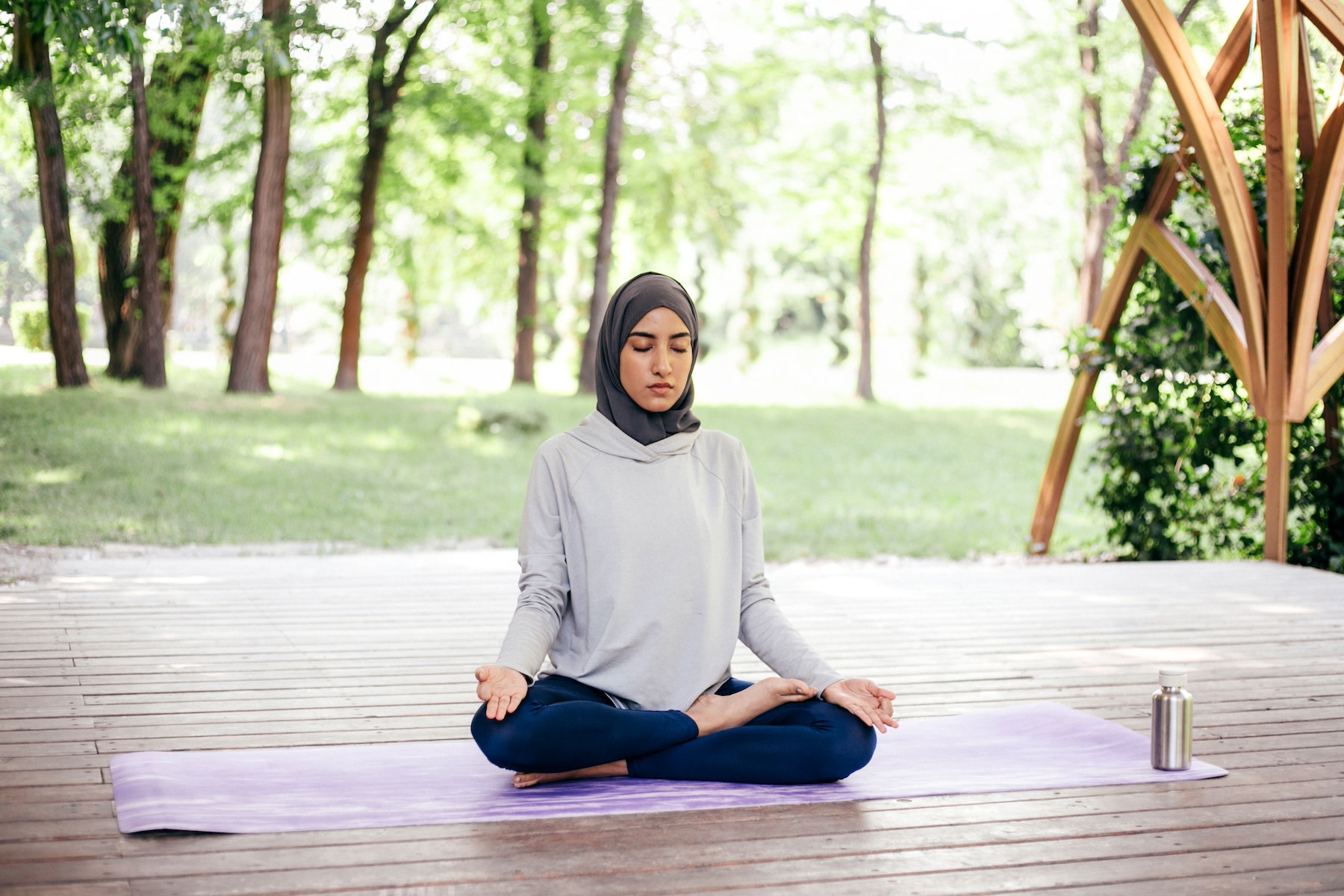
Liubomyr Vorona / iStock / Getty Images Plus via Getty Images
Nope, Mindfulness and Meditation Aren't the Same Thing. We Asked Experts to Break Down the Difference.
They might sound similar, but they're two uniquely beneficial things. Here, experts explain how (and why) to practice each.
By Michele Ross•
What’s the Difference Between Mindfulness and Meditation?
How Are Mindfulness and Meditation Alike?
How to Practice Mindfulness vs. Meditation
The Takeaway
Mindfulness. Meditation. What do the two words bring to mind? Although both wellness practices share quite a few things in common, they’re not one and the same. Each can be highly beneficial in bringing a sense of serenity and calm to many aspects of your life—including your sense of self, relationships with others, and even your workouts. What’s more, both mindfulness and meditation are accessible to anyone at any time.
Keep reading to discover the ins and outs of mindfulness vs. meditation, with practical examples for each and tips on how to practice the two.
What’s the Difference Between Mindfulness and Meditation?
Meditation typically entails a dedicated practice, whereas mindfulness is a quality you can embody not only while meditating, but also through every moment of your life.
While the two aren’t the same thing, they do complement one another extremely well. “We can practice mindfulness without a formal meditation practice, and a formal meditation practice can help us become more mindful,” says Peloton instructor Kristin McGee.
Want to dig a little deeper? Here are a few more differences of mindfulness vs. meditation:
Mindfulness
“Mindfulness is a quality we can have in our lives by being more aware of our surroundings and being present in each moment,” Kristin says.
It’s an active practice that entails engaging with your mind, body, and spirit and observing without judgment, according to Tanvi Gandhi, ND, a naturopathic doctor and acupuncturist at Silver Hill Hospital.
Kristin says that cultivating a sense of mindfulness can help us:
Connect more deeply to ourselves, others, and our environment
Slow down in moments where we typically rush (such as when eating a meal or going from one point to the next)
Stay present with ourselves and our movement (including during a workout)
Meditation
“Meditation is a formal practice that can use mindfulness as a technique, but also has many different techniques for focusing the mind and training our attention so the mind can become more calm and clear,” Kristin says.
The practice is ritualistic, which often includes:
Settling into a relaxing environment
Choosing a comfortable meditation position
Dedicating a set amount of time to meditate, whether that’s five minutes or half an hour
A meditation practice has the potential to offer a world of benefits, positively influencing your mental health (such as by reducing anxiety), cognitive skills (like by boosting attention and memory), mind-body endurance, sleep quality, and potentially even cardiovascular risk.
“Meditation relaxes the nervous system and connects us with ourselves. It can bring us into a deep state of rest and healing, and can help us focus the mind and become more clear,” Kristin says. “It helps us feel better throughout our day, sleep better at night, and start to respond better over time in all situations.”

Evgeniia Siiankovskaia / Moment via Getty Images
How Are Mindfulness and Meditation Alike?
Mindfulness and meditation both require a heightened sense of awareness and staying present in the moment. The two can prove to be highly beneficial for your physical, mental, and emotional well-being, and each can facilitate a sense of calm, inner peace, and gratitude.
“During mindfulness practice or meditation, the brain releases deeper brain waves, promoting self-healing, nervous system regulation, and reducing effects of stress, anxiety, depression, pain, trauma, and inflammation,” Gandhi explains.
Moreover, a 2022 study of healthy females published in the journal Comprehensive Psychoneuroendocrinology suggests that even short periods of intense mind-body intervention (via mindfulness-based techniques such as stretching and meditative breathing) may increase serum brain-derived neurotrophic factor (BDNF). BDNF promotes neuroplasticity, which allows the nervous system to change and helps the brain form new connections. This essentially permits you to unlearn thoughts and patterns that don’t serve you and replace them with positive ones.
In short, both mindfulness and meditation are powerful tools to help you lead a happier, more fulfilling, and more rewarding life for days and even years to come.
How to Practice Mindfulness vs. Meditation
If you’re committed to incorporating more mindfulness into your daily life, or if this is the gentle nudge you need to start (or continue) a meditation routine, check out the pro tips, tricks, and how-tos for each practice below.
Examples of Mindfulness and Tips for Getting Started
If you’re convinced that meditation just isn’t your thing, rest assured that there are plenty of ways to reap the rewards of mindfulness without a formal meditation practice. For instance, your fitness routine is a great opportunity to cultivate mindfulness, whether you’re on your Peloton Bike, Tread, or yoga mat, or during any other workout.
Instead of letting your mind wander during a workout class (such as one of the many available on the Peloton App), “feel your legs working, channel in on your breath, listen to your heartbeat, and stay focused on the instructor,” Kristin advises. If you’re exercising outdoors, you can practice mindfulness by tuning into the elements, like the sun warming your skin or the wind cooling your face, she adds.
As you cool down, try to stay tuned in. “Use this as an opportunity to really check in with your body and mind and stay connected,” Kristin says.
To practice mindfulness in other parts of your life, Gandhi suggests:
Waking up with gratitude and intention. “[See] each day as a gift when you wake up,” she advises. You can also journal or visualize the day to come, framing the experiences and to-dos ahead in a positive, productive light. Affirmations can also come in handy before you swing into the day ahead.
Concentrating on your breathing. “Focus on your breath work by welcoming each inhalation as fresh oxygen and nourishment,” Gandhi suggests. “Let go of each exhalation fully to release pain and inflammation.”
Leaning into body-sensing. For example, Gandhi says this can involve bringing heightened awareness to your toes with each step or feeling supported by the chair and floor beneath you as you’re sitting at your desk.
Practicing loving-kindness. “Examples of simple loving-kindness affirmations include, ‘May I experience peace, love, kindness, and well-being. May there be peace, love, and kindness around me. May there be peace, love, and kindness on earth and beyond,’” Gandhi shares. Repeat these affirmations with sincerity and watch how much lighter and brighter you’ll feel—as well as how much more connected you’ll be to yourself and the world around you.
Examples of Meditation and Tips for Getting Started
“Meditation is guided by the self or an instructor and done in a specific way for a specific amount of time,” Kristin reiterates. There are many different types of meditation to choose from (with no shortage of varieties to choose on the Peloton App!), some of which she says may include:
Breathing exercises, in which you focus on your breath
Guided visualization, which involves an instructor guiding you with imagery
A body scan, during which you focus on and relax your body one area at a time)
A mantra, which involves mentally repeating an affirmation or phrase to ease the mind
To not only start a meditation practice but also set yourself up for success, you’ll want to:
Explore different types of meditation to find the best one for you. As you try out different meditation classes and techniques, you’ll get a feel for which ones you like doing the most and make you feel better after they end. Come back to them to help you get the most out of your practice.
Get comfortable. You don’t need to stay seated for hours on end to meditate. You can make a seated meditation posture more comfortable with props such as a pillow or block, or you can also choose to meditate lying down on your mat—or even in bed.
Give yourself grace. While you might want to tune in, go deep, and experience bliss during a meditation class, your mind may instead want to chatter away and distract you from staying present. Yet instead of getting frustrated or feeling as though you failed, take a breath, cease judgment, and carry on. As Kristin previously shared with The Output, the goal isn’t necessarily to eradicate these thoughts completely. Instead, it’s more practical to train yourself to let them quietly fade into the background when they pop up.
Be consistent and stay the course. While a single meditation class can potentially make you feel at ease straight away, the practice is a gift to yourself that keeps on giving. Even if you simply meditate for a few minutes each day, you’ll get into the swing of things and allow meditation to become a habit. The benefits of meditation compound over time, and they’ll be longer lasting the more you practice.
The Takeaway
Simply put, meditation involves mindfulness whereas mindfulness doesn’t require meditation. Moreover, a solid meditation practice can help you feel better and be more mindful long after your session is over. But that doesn’t mean that meditation is necessarily superior to mindfulness. “Mindfulness can do the same thing, but it’s not a set formal practice,” Kristin explains. “It’s more a way of being more present in every moment of our life.”
Trying to be mindful all the time may seem intimidating or far-fetched for some, but perfection shouldn’t be the end goal. However, making mindfulness a habit—namely by slowing things down, tuning into your senses in the here and now, and trying to pick up a meditation practice—has the power to benefit you both on a daily basis and in the long run.

Peloton App
Access thousands of classes with no equipment needed.
This content is for informational and educational purposes only and does not constitute individualized advice. It is not intended to replace professional medical evaluation, diagnosis, or treatment. Seek the advice of your physician for questions you may have regarding your health or a medical condition. If you are having a medical emergency, call your physician or 911 immediately.
This content is for informational and educational purposes only and does not constitute individualized advice. It is not intended to replace professional medical evaluation, diagnosis, or treatment. Seek the advice of your physician for questions you may have regarding your health or a medical condition. If you are having a medical emergency, call your physician or 911 immediately.
Strengthen your mind-body connection
Enter your email to get articles, expert-backed tips, and updates from Peloton sent to your inbox.
By providing your email address, you agree to receive marketing communications from Peloton.
For more about how we use your information, see our Privacy Policy.









